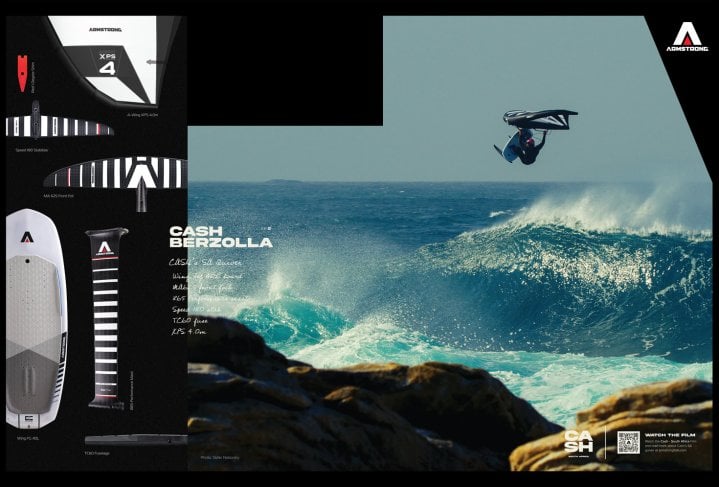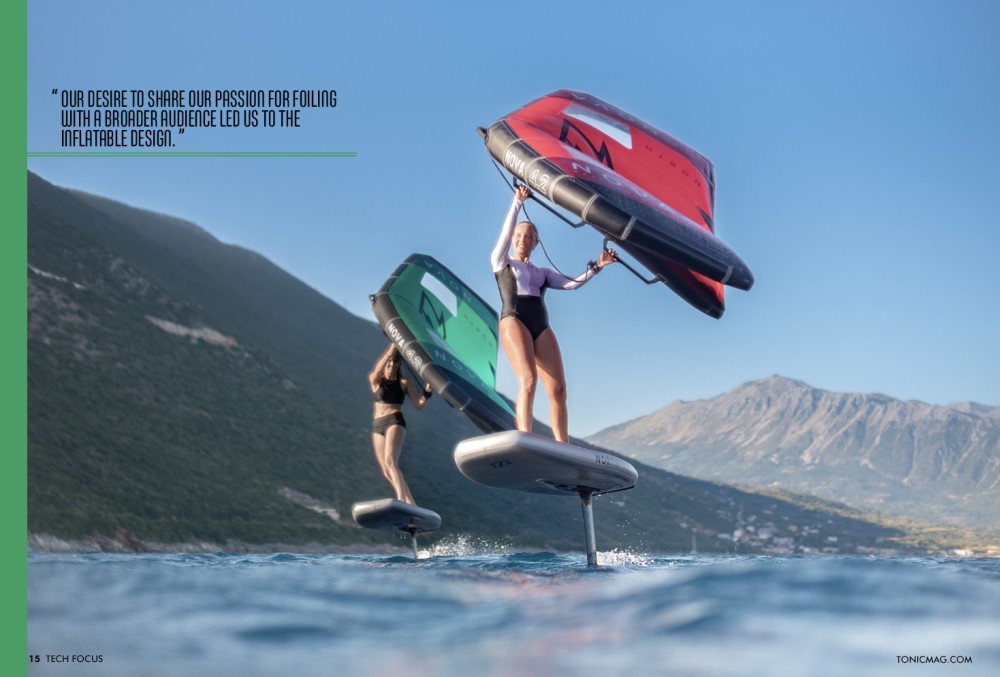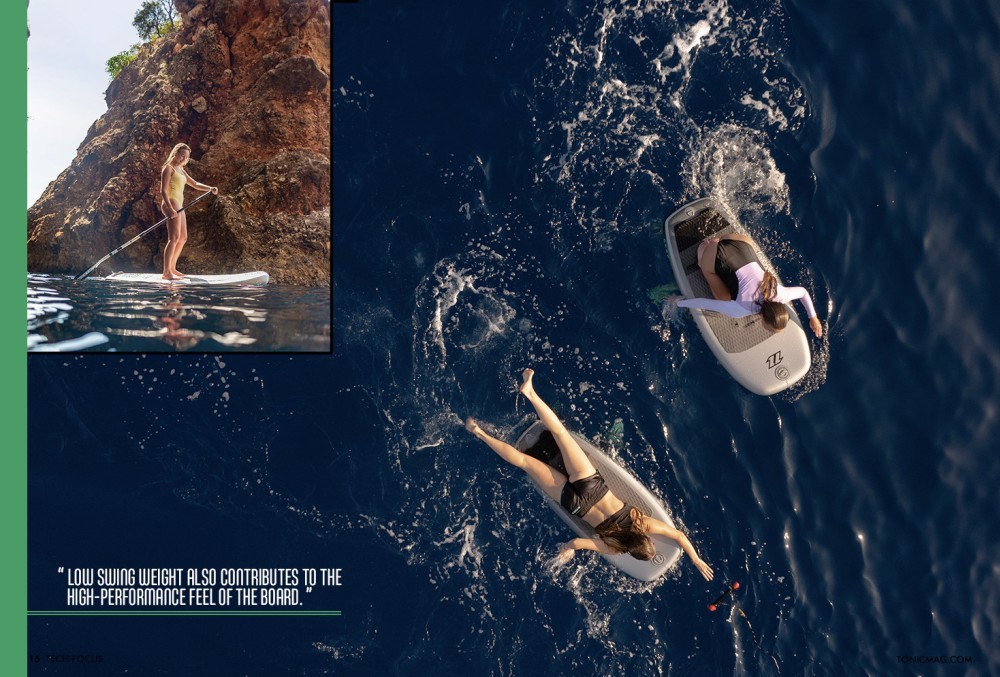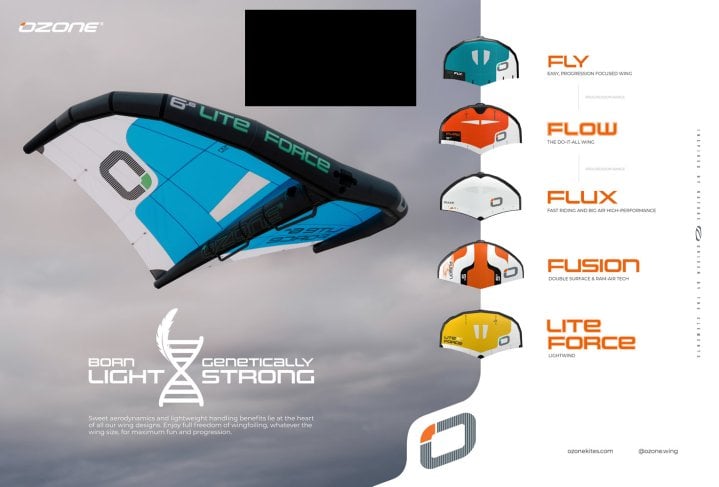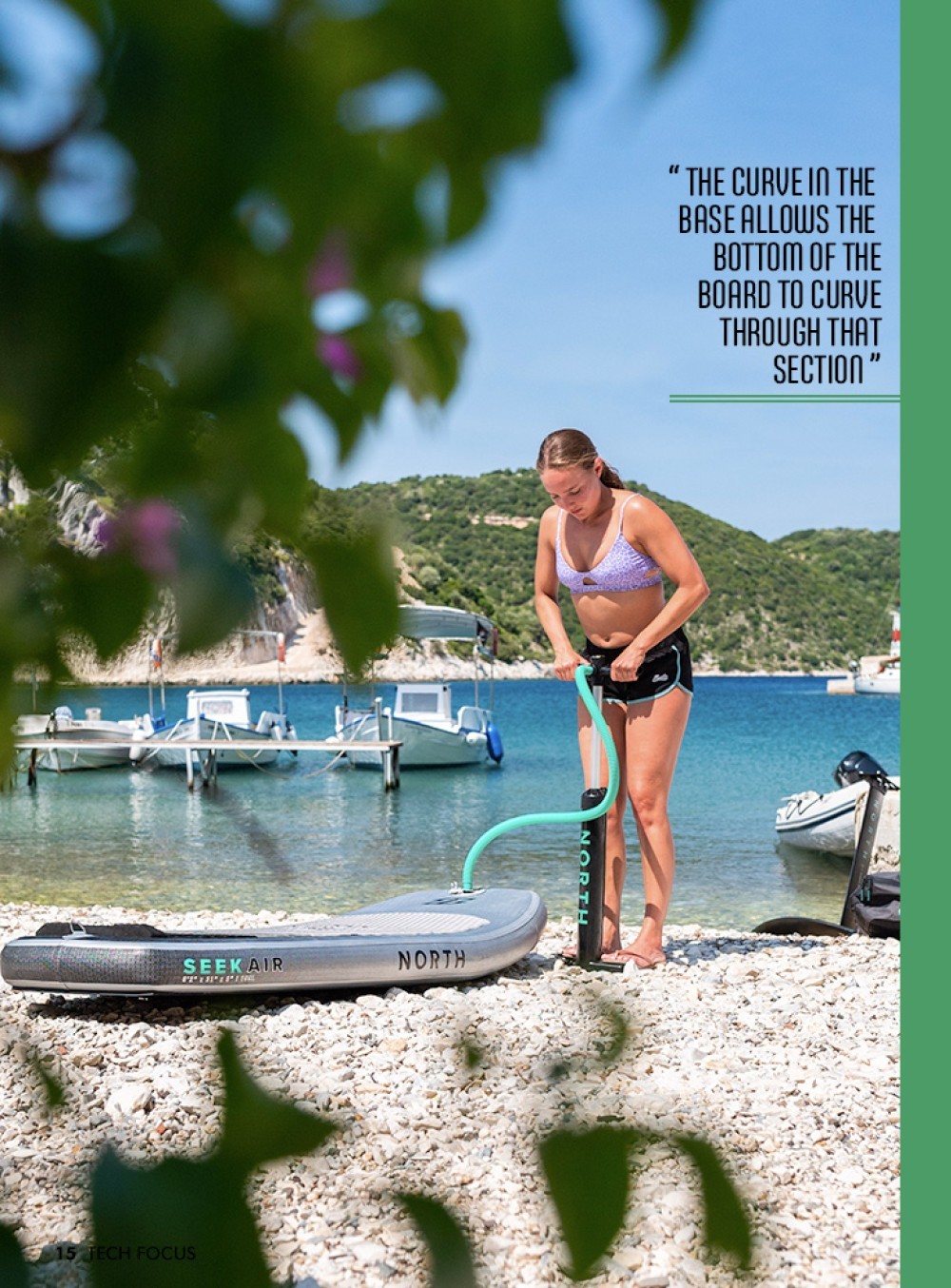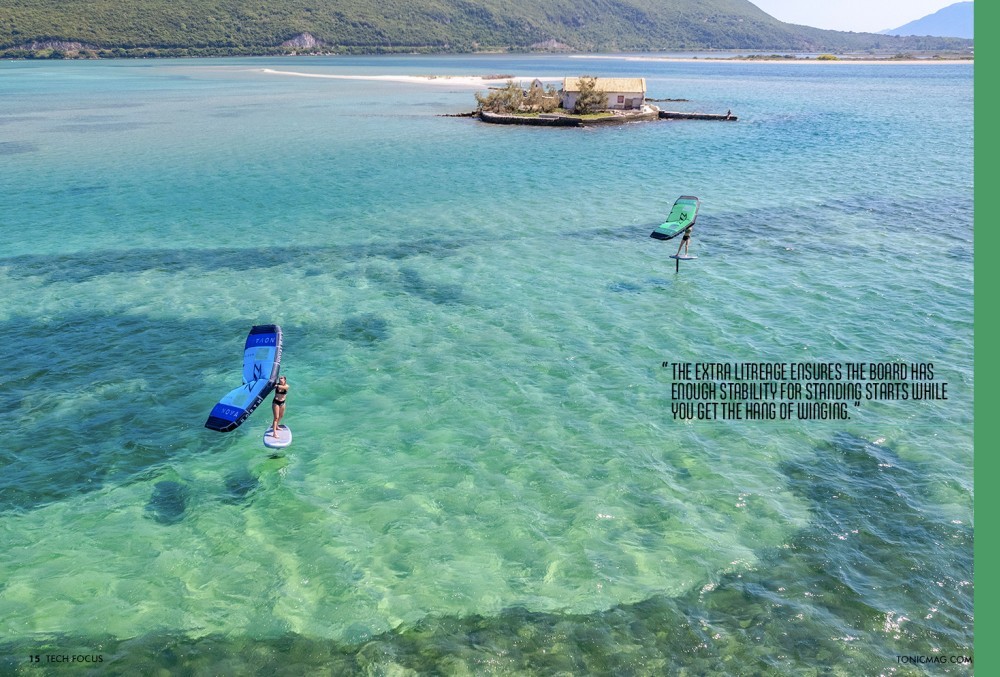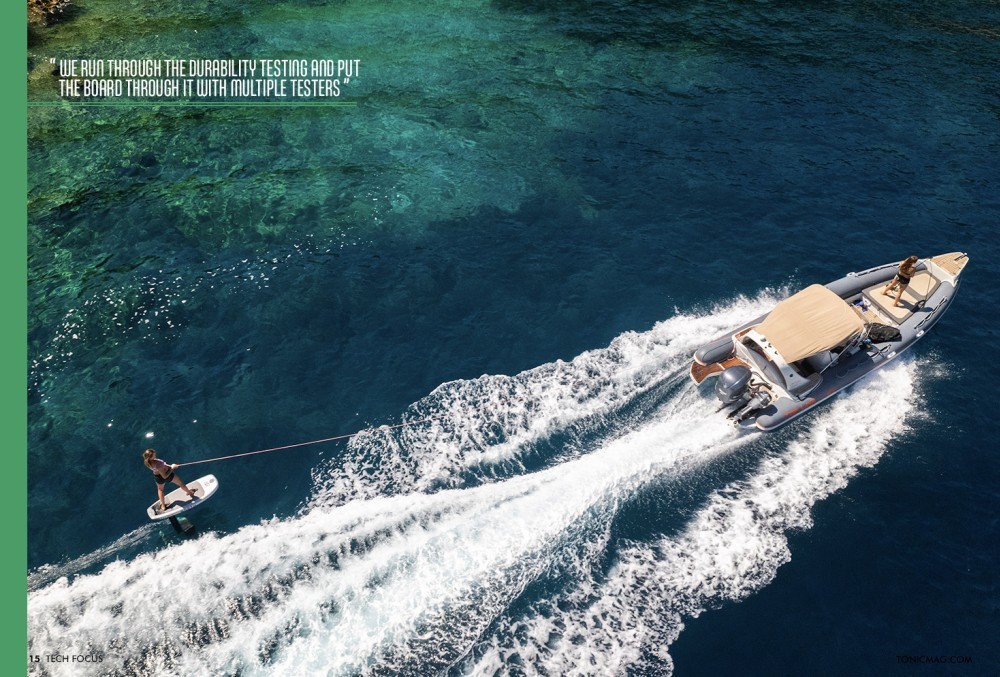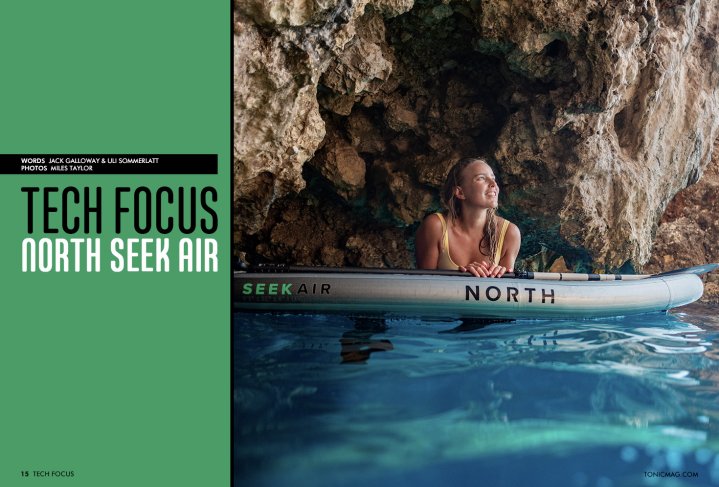
Tech Focus - North Seek Air
Issue 15 / Thu 23rd Feb, 2023
North are revolutionising the inflatable wing board. Find out all about it here.
In the past, it has been widely known that inflatable wing boards, although convenient, lack performance. This was due to the instability & flex between the deck & bottom layer, making foiling a real challenge… until now! North has quite possibly revolutionised this part of the sport. Read on to find out how as we interview Uli Sommerlatt.
Hi Uli! Thanks for joining us to talk about the new Seek Air. Could you start by letting our readers know who you are and what your role is at North?
Hi Jack, my name is Uli Sommerlatt, and I’m the Product Manager responsible for developing all our Sonar Foil, Boards, and Wing equipment.
As we’ve found while testing the new Sonar, Mode, & Swell. North has made a decisive push to make the best winging and foiling gear. What made you, as a brand, choose to take on the inflatable wing board?
North Foils has a unique position in the market with our North Sails heritage. Our desire to share our passion for foiling with a broader audience led us to the inflatable design. Its lightweight convenience, space-saving design, and of course, the ding resistance factor (for your boat and the board) all contribute to the appeal for sailors and boat owners. We wanted to present an easy crossover for sailors and their families to experience foiling and winging – while staying true to the idea of “Fun starts here”. We also wanted to create a high-performance product that packs down to a small space. Something that’s easy and safe to learn on (when you fall, it doesn’t hurt you or the board). Who says performance cannot be inflatable?
Our first thoughts on this board would be the convenience of rolling it up into a backpack. What sort of size is the bag and how easy is it to carry? I imagine it will be a great solution to travelling.
As any wingfoiler or kitesurfer knows, travelling with all your gear can be challenging. We’ve endeavoured to make it as fuss-free as possible. The recycled PET bag is 75x90cm, and its roomy design also fits your Sonar Foil System and Nova Wing inside, for easy travel. It has comfortable ergonomic backpack straps which fold away under a cover when not in use and large roller wheels for easy manoeuvring. There is room in the bag for your foiling gear as well.
What are the other benefits of owning an inflatable board? Weight & durability must be a big consideration.
Weight – not only does this make it travel-friendly, it’s lightweight, and low swing weight also contributes to the high-performance feel of the board.
Durability – the PVC Dropstitch Technology construction is durable, impact-absorbing, and ding resistant. As mentioned, this makes it ideal for protecting your boat and the board and provides the rider with a forgiving surface to fall on when you’re learning to wing or foil.
The Seek Air features a CST Carbon Sandwich Transfer Base, custom-curved to match the rocker of the board. This looks like a game-changer in inflatable board technology. Where did the idea come from and how does it work?
Just like on any of our other products, we do not like to compromise on the key attributes that make a good design. A dedicated foil board must have a well-dialled-in rocker.
With the moulded prepreg Carbon Sandwich construction we have chosen for the CST Base, we have the freedom to shape, ensuring we can retain the rocker through the board just like it would be a rigid board.
The CST base plate runs the full length of your stance, transferring the load and your steering impulses directly to the foil. The curve in it to match the curved rocker of the board helps with touchdowns. It’s the exact design feature change we added to the 22 Seek – pivotal rocker, which is better for pumping and easier to come back up onto the foil when you touch down. The CST Base is about 1m long, and the curve in the base allows the bottom of the board to curve through that section, increasing the ease with which you get onto the foil. It also helps with earlier take-offs, a really flat section will stick on touchdowns, but the curve will make it easier to lean back and take off.
That stiffness must make its pump-ability and control next level in comparison to earlier inflatable board designs?
In all honesty, from the very first test runs, I was really surprised at the performance of the Seek Air. Prior, I had hesitations that you might feel a big loss in performance. But after the first test, I had to admit this prejudgment was unjustified. The board feels really rigid and the load gets transferred without any loss in efficiency.
It looks to me as though the Seek Air will be great as a beginner board that continues well into your journey as an intermediate foiler. What would be your recommended size choice for someone getting their first board?
For novice riders, we recommend adding 30-40L to your body weight in kg. So a 75kg person would be looking at a 5’1/108L board or larger. An intermediate rider or someone progressing across from another foil sport would look for 10-20L above their body weight in kg. The extra litreage ensures the board has enough stability for standing starts while you get the hang of winging. A larger board is also ideal to keep in the quiver for winging in light wind - no matter what your ability level. It’s a huge advantage to be on a board that doesn’t sink if the wind drops and you have to crawl home…
Where are the fin boxes for the two larger sizes? I think it’s great they can be used for non-foiling winging too.
There are two side fin boxes with removable fins supplied with Seek Air for the 5’9 and 6’11. We have also developed a DropBox Fin Adaptor that allows you to use the DropBox Foil Mast track with a fin. This is available as a separate accessory.
When the Seek Air is used for winging with all three fins, it allows you to stay upwind. If you ride any kind of sail-powered board you need lateral restraint underwater in the form of fins to avoid drifting downwind.
The centre fin also converts the board to a stand-up paddleboard that you could use to explore off a boat. It’s easier to manoeuvre as a SUP with just the centre fin, but the side fins add extra directional stability.
This is clearly an incredibly well-thought-out product. The drop box fast foil mounting is genius! What is the testing process like for a board like this?
It is actually quite a long process to get a product like this to the market, with a lot of iterations in-between to validate shape and build quality. Once we have the shape locked in, we run through the durability testing and put the board through it with multiple testers in different locations around the world. Then we collect the feedback and make adjustments where needed. Once the board has passed all its development stages and QC steps, we sign it off for bulk production.
Thanks for taking the time Uli. We can’t wait to try one out!
Videos
By Jack Galloway


